talkingfashion » 1960s accessories
-
The Heady History of the Hand Fan
The Heady History of the Hand Fan
By Paige McKirahan
When considering all of the accessories that are used for both utilitarian and decorative purposes, one of the first to come to mind is that of the hand fan. Though this ornamental piece was widely popular in Victorian Eras as a foreign symbol of wealth and class, their origin lies centuries prior in ancient Egypt, Greece, and Rome. After two elaborate fans were discovered in King Tut’s tomb, their gilded appearance solidified the fan’s prominent presence in the accessory world.

(photo credits to pinterest.com)
The fan, which was originally thought be a sacred instrument, was used in religious ceremonies and by royalty in noble settings. They were also used in China in association with ancient mythical and historical characters. At their conception, they were fixed and remained as so until Chinese culture birthed the folding fan and spread it westward towards Europe. Both Chinese and Japanese legends credit their respective countries with creating the piece; the Japanese feel that the folding style is modeled after the wings of bat, and the Chinese legend claims the idea stemmed from a woman fanning her face at a festival.

(photo credits to clickpicx.com)
The 17th century then saw an increase in the use of folding fan, eventually causing fixed fans to become obsolete. This style was brought to Western cultures by merchant traders and religious missionaries, and prompted the development of the printed fan, which was made available to all classes. They generally featured prints of all kinds, either painted or transferred on, and shifted from biblical tradition to contemporary pastimes. The Impressionist, Art Nouveau, and Art Deco movements highly impacted the design and construction of fans from the 19th to the 20th century . The 19th century boast some of the most lavish fan designs in history and they were usually hand painted, furnishing those in royal positions. In the 20th century, feathered fans became popularized by those in high society and ostrich plums could be see floating through the air at every Moulin Rouge show!
Even though fans are not presently part of the everyday fashionista’s accessory arsenal, they still can be seen at royal events and in haute couture shows. We here at TalkingFashion think that something so grand should never go out of style, so to get your own fashionable fan, check out our fantastic collection here!
Sources:
History of Fans. (n.d.). Retrieved from https://www.thefanmuseum.org.uk/fan-history
A Brief History of the Hand Fan. (2008). Retrieved from https://web.ics.purdue.edu/~salvo/@SEA/exhibit/history.asp
-
The Grand History of Gloves
The Grand History of Gloves
By Paige McKirahan
In the accessory world, there are many pieces that have lifespans spanning centuries back to primitive ages. Can you guess which one we will be discussing today? As we head towards colder months, one of the most widely worn pieces conceived in ancient times is seeing an influx in use. Hats or coats may be the first things that come to mind, but it is actually the history of the glove that we are looking to dive into!
As a major piece in the fashion accessory puzzle, we first heard of the the glove when it was incriminated in the History of Herodotus (440 B.C.E.) and discussed as protective wear in The Odyssey by Homer. Ancient Egyptians typically used gloves as protective garments while working, but Pharaohs sported them to symbolize their high status. Women in this time wore the piece to protect the beauty of their hands, and they were made as a sort of small “pocket” with no holes for fingers; essentially, they were similar to today’s mittens and allowed women to maintain a feminine look.

Gloves found in King Tut's Tomb
(photo credits to pinterest.com)
Moving away from this more general use, gloves began being integrated into religious rituals. Bishops began a tradition of wearing them for Holy Sacrament, and their presence in religion can be traced all the way back to the 10th century. Popes, cardinals, and bishops wore them to keep their hands clean for holy ceremonies, prompting Kings to adopt the same practice when conducting royal business. Royalty also took cues from ancient Egyptians and later used gloves as an ornamental accessory to exude wealth and luxury. As we move towards the 13th century, they made their way in to royal women's fashions and common fabrics included silk or linen, featuring lengths reaching the elbow. By the 16th century, Queen Elizabeth brought bejeweled gloves to the forefront as a sought after trend, taking the normally simple accessory to previously uncharted territories.

Glove from the Holy Roman Empire
(photo credits to inesgloves.com)
In the 1700s, short sleeves came into circulation, prompting gloves that reached halfway up the forearm to become popularized. This style was on trend well into the next century, when gloves were more popular than ever before. Buttoned silk, kid (soft leather), or velvet gloves paired with evening dresses were customary, and longer suede gloves could be seen during the day during tea. At this point, the accessory was still being made mostly by hand, as most manufacturers opted out of using the complicated sewing and pressing machines available at that time. At the conclusion of the 1800s, we saw innovations in the industry that caused the first sterilized medical gloves to be created in 1894; the first disposable latex gloves were later manufactured in 1964 by Ansell.
The 1900s saw the use of gloves transform entirely. At the beginning of this century, one of the first references towards criminals using gloves to hide fingerprints was made in 1905 and this mysterious affiliation has been highly present in the media ever since (think O.J. Simpson). The industry began seeing dramatic changes on account of the societal shifts in the first half of the century; the birth of old Hollywood and the popularity of starlet’s style in the ‘20s through the ‘50s made simple gloves a staple in any modern woman’s closet. Gloves were still seen as a symbol of elegance well into the 1960s, where they truly came into being a symbol of riches, hypocrisy, and official relations. After that decade, the popularity of gloves for purposes other than cold weather wear declined; the introduction and overall popularity of more simple clothes and jeans didn’t require the upscale accessory. We saw a brief popularity boost in the ‘80s, with fingerless, netted, leather, and neon gloves returning to storefronts as the grunge and hairband movements favored accessory laden outfits.


Marilyn Monroe and Audrey Hepburn
(photo credits to pinterest.com)
Today, gloves have continued moving away from their royal roots and have headed towards adopting a more casual position in the fashion world. In addition to their wintertime popularity, they have also become important parts of sport uniforms used in baseball, golf, football, racing, and a multitude of others. In fashion, there are three prominent lengths: wrist (matinee), elbow, and full length (opera). The most popular material is satin and stretch satin, and are commonly seen at formal events such as proms, weddings, quinceanera, cotillions, or confirmations. If you have any of these events coming up or you are just trying to prepare for the December snow, we here at TalkingFashion have you covered! Head over to our collection to get a set of gloves wonderful enough to make you feel like royalty!
-
History of the Watch: A Timeless Timekeeping Accessory
The Watch: A Timeless Timekeeping Accessory
By Paige McKirahan
The neverending passage of time is what that we base all of our daily schedules on; from sleep to work to the next fun party, everything runs on the basis of time. But, what is time without a timekeeping device? Without them, we would never be quite sure if were truly on time, and for chronically late people (like myself), this would create quite a problem. People found this to be increasingly troublesome and started looking for a solution; yes, clocks on the wall tell us all we needed to know, but how would we have this knowledge if we were out and about or a clock wasnt near? This question was answered with the creation of the wristwatch in the early 1800s for the Queen of Naples.
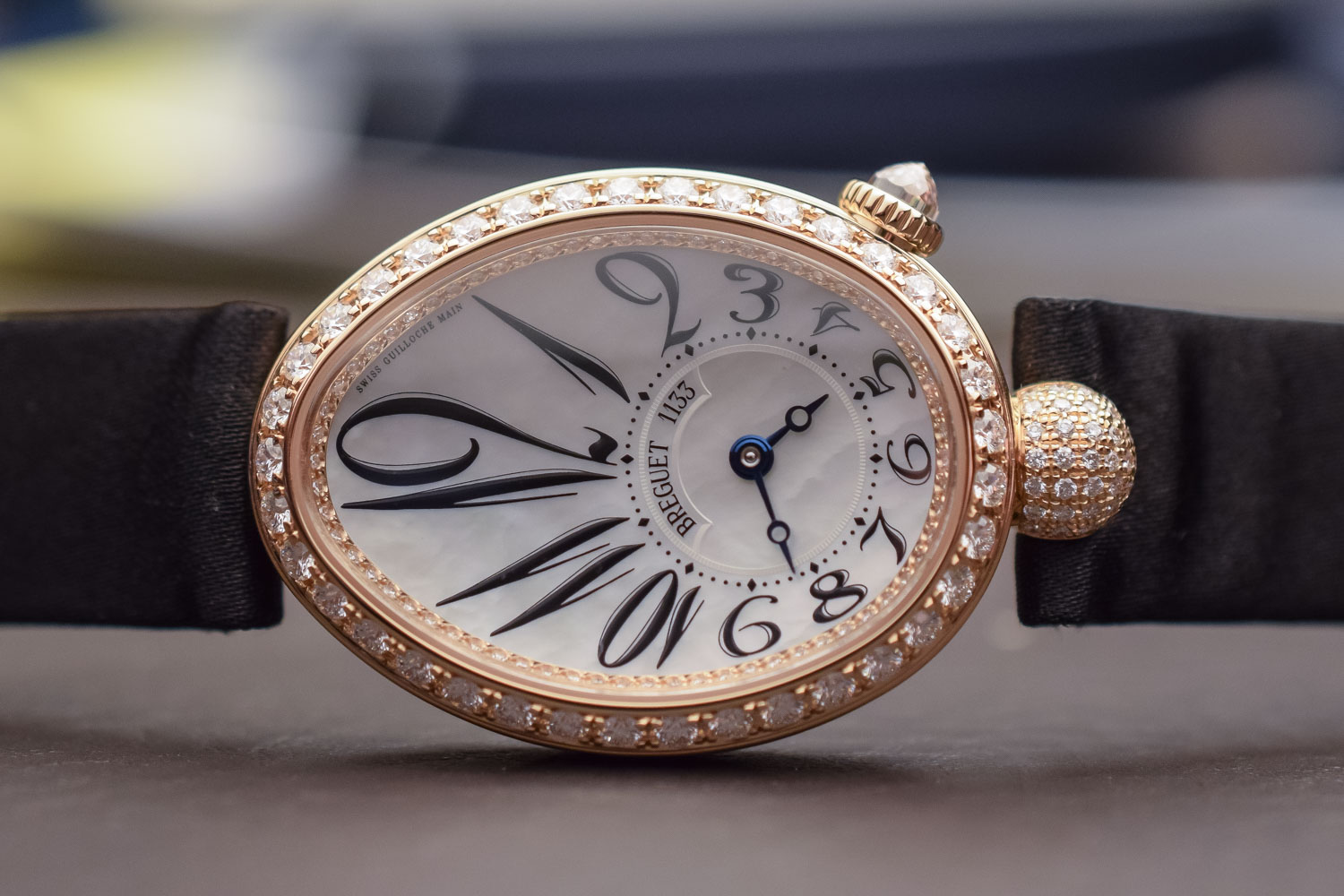
A replica of the first wristwatch
(photo credits to monochromewatches.com)
Despite the fact that arm watches were actually created in the 1570s, they were not worn on the wrist and weren't particularly popular with the public until this updated 17th century design. Arm watches were more so worn by women on account of the fact that they were prone to damage; men wore pocket watches and the first was created in 1574. Wristwatches changed this dynamic on account of the fact that men in the military advocated for the accessory as it allowed them to keep track of time with ease. Alberto Santos-Dumont, a Brazilian aviator, reached out to his friend Louis Cartier to come up with a style that of watch that would allow him to keep both hands on his controls while still being able to properly time flights. Cartier collaborated with watchmaker Edmond Jaeger to develop the Santos wristwatch, which is one of their brands cornerstone pieces.
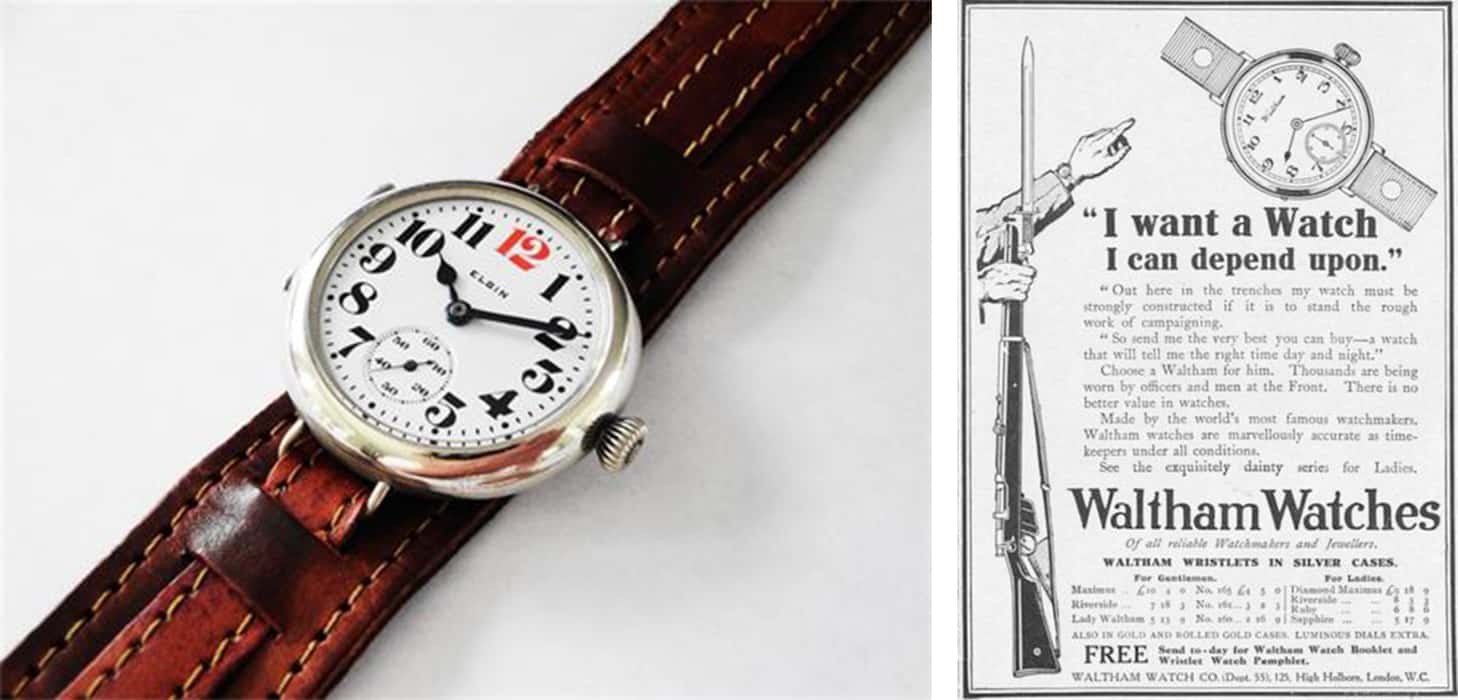
Military watch ad from WWI
(photo credits to wornandwound.com)
As we progressed towards the first World War, the popularization of watches for those in the military grew; the wristwatches they were given were referred to as “trench watches” and they established themselves as part of the Officers Kit for the war front. After this time, this accessory began to truly evolve as industrial advancements allowed for the production of wristwatches with automatic winding. John Harwood, a watch repairer, claimed patents for this ingenuity in 1923 after he was the first who managed to use the kinetic power garnered from the watches' hand movement to changing mechanisms. He then started producing these watches in a factory in Switzerland in 1928, which gave the public a chance to purchase one of his timekeeping pieces that could work for 12 hours on a full charge. In the 1950s, fully electric watches were introduced, with the balance wheel being powered by a solenoid, which is a thin wire trapped around a metallic core that procures electric currents.
This new electric watch allowed for the birth of the quartz watch, which removed all moving parts in mechanical watches; this 1969 invention instead used a battery, allowing them to be more shock absorbent and accurate without constant cleaning or oiling. Quartz watches are still manufactured today, but some luxury Swiss brands choose to create non-quartz options by hand. Today, watches can be made of stainless steel, silver, gold, titanium, carbon fibre, platinum, and aluminum. Some manufacturers even use more high tech silicons and ceramics in experimental design. Aside from regular watches, though, smart watches have made waves in wearable timepieces in the past five years and can be seen on the wrists of millions. Apple, Samsung, and Google have all created their own smart technology, opening the door for other new watches that can be connected to smart devices. Whether you are a fan of the classics or are going all digital, read on to see where your preference falls in the top 5 most iconic watches of all time!
The Cartier Santos
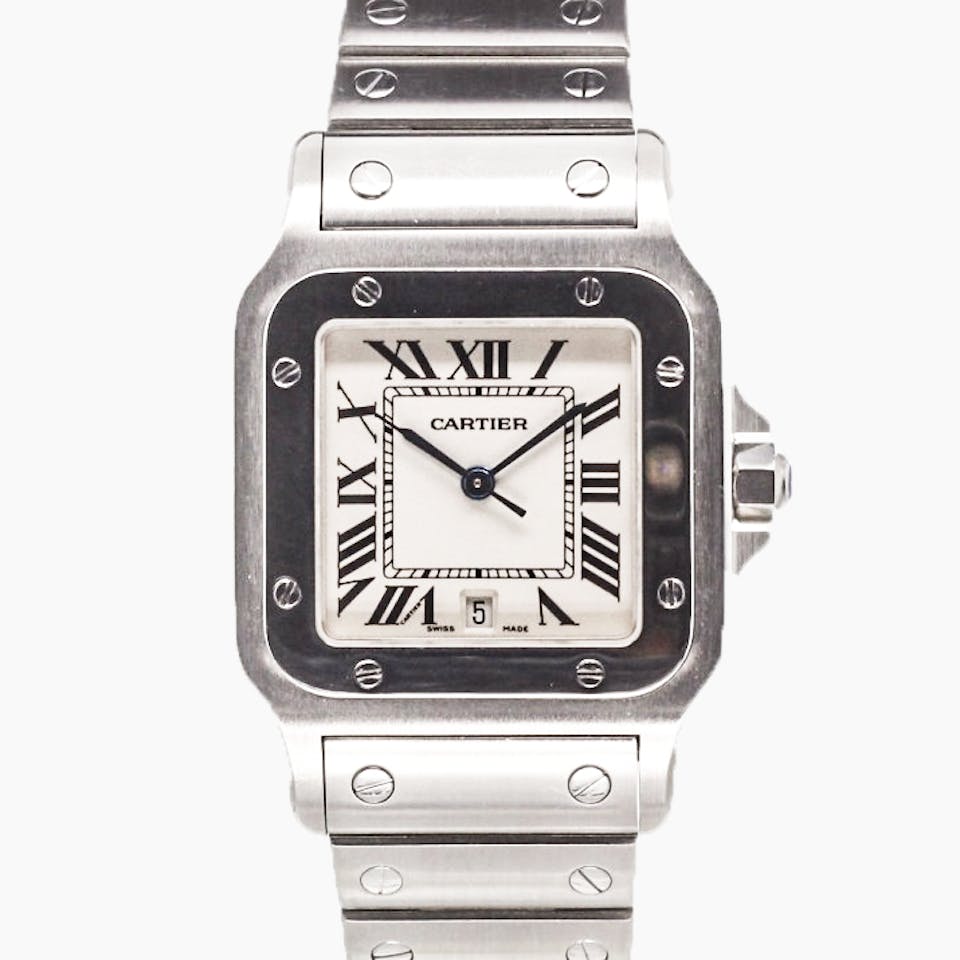
As we learned, this watch was one of the first of its kind and was created to help Alberto Santos keep time while flying his plane. Today, it is an iconic style who’s elegance and history lures in all types of buyers.
Jaeger- LeCoultre Reverso
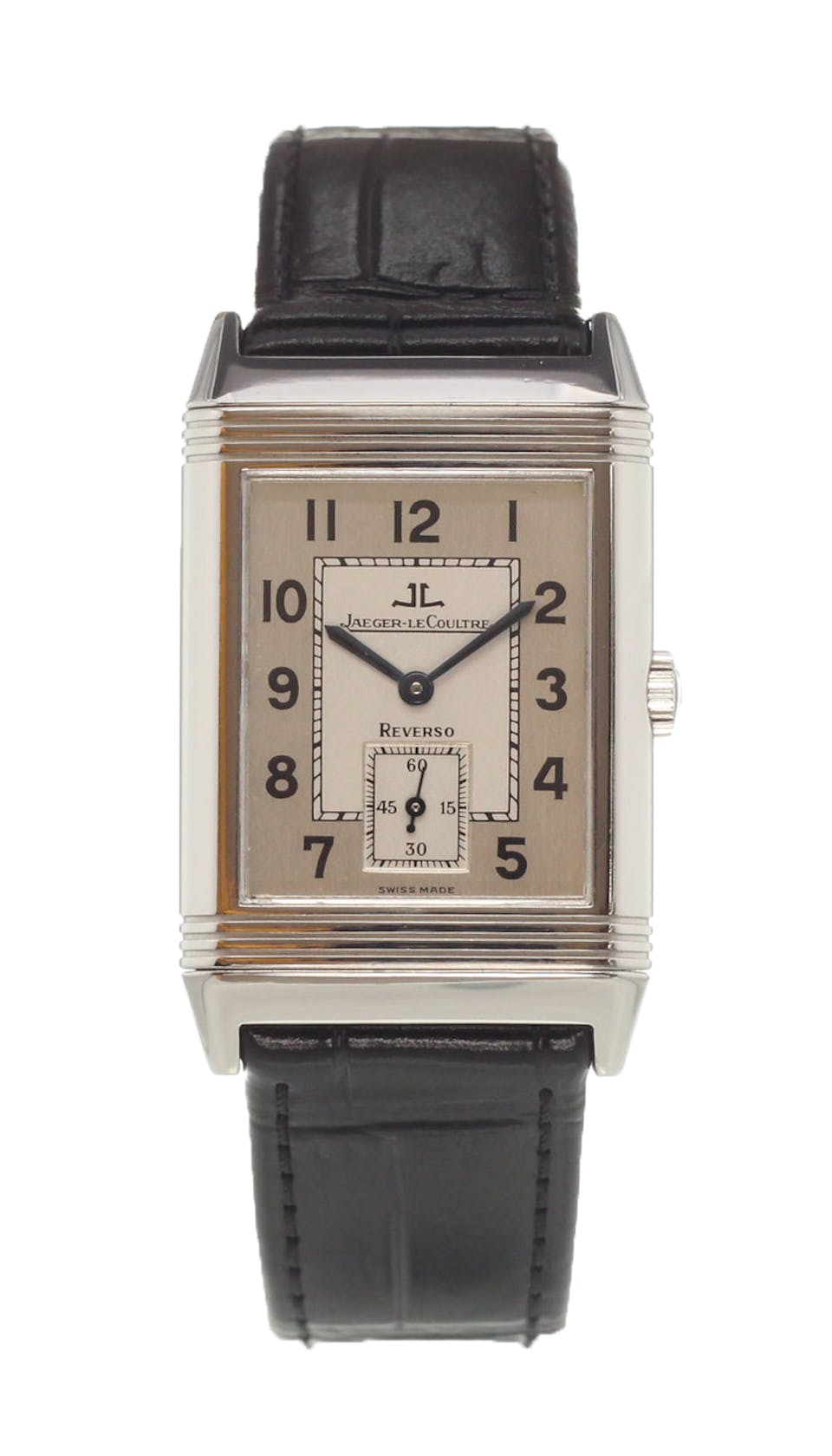
This Art Deco piece made it debut in 1931 as a watch for Britian's elite polo society. It featured a casing that was on a swivel, which ultimately protected the watch from cracks caused by force. Its classic, angular style sets it apart from the rest, appealing to collectors everywhere.
IWC Pilot’s Watch
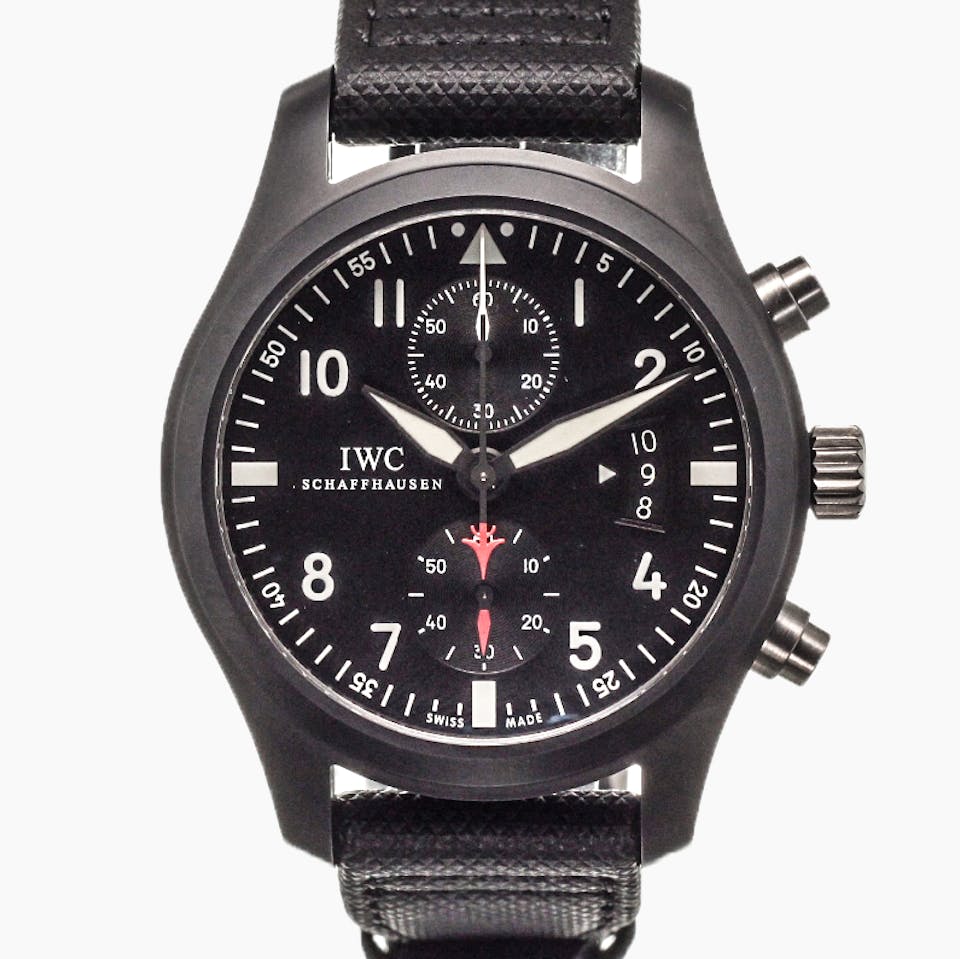
This Special Pilot's watch was the first of its kind at the time of its release by IWC in 1936; it prompted a collection of other military grade watches that captured the praise of the public for decades. This timepieces features a stainless steel waterproof casing that surrounds a softer inner cage, protecting the movement from magnetic fields.
Patek Phillippe Perpetual Calendar Chronograph

This timepiece was one of the first of its kind as it was able to keep track of the date for 200 years without adjustment. Patek released this watch in 1941 and it took the timekeeping community by storm as it was also able to measure small increments of time. Today, it is still widely sought out by collectors and leisure wearers alike.
Rolex Datejust
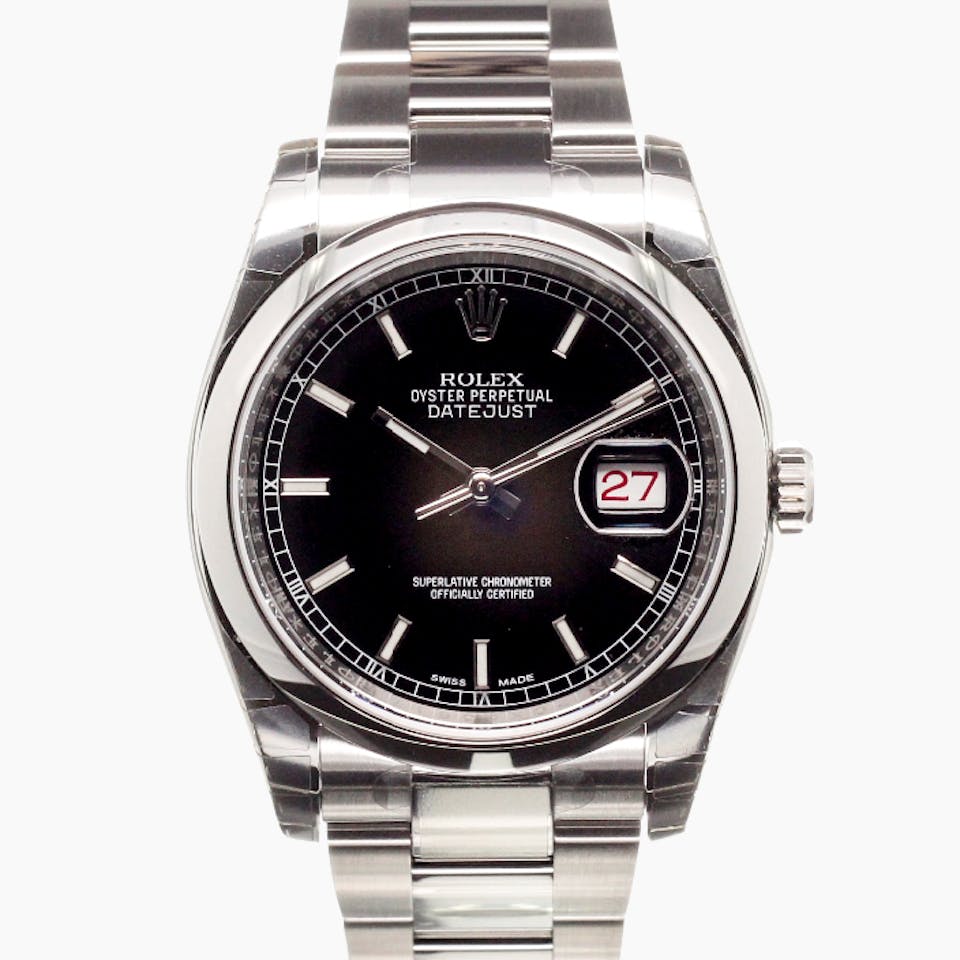
As one of the most iconic watch brands of all time, Rolex released the Datejust in 1945 and it was distinguished by its date indicator. This designs trademark was the Cyclops lense, and its original design has been nearly unchanged. A symbol of strength and intelligence, this timepiece has been worn by the likes of Winston Churchill and Dwight D. Eisenhower.
(all above photo credits to chronext.com)
If you're looking for a way to avoid being fashionably late while still being chic, check out our collection of timekeeping accessories!
-
Sustainable Jewelry: Wooden Accessories
Wooden Jewelry
By Paige McKirahan
As one of the most versatile materials in nature, wood can do everything from create beautiful jewelry to make paper. With the ability to be delicately carved and elegantly painted, it has been trending in the accessory industry for decades. Considering society’s movement towards a more sustainable future, this lightweight, natural material is highly sought after; its economical and eco-friendly designs have established itself as a frontrunner in sustainable product creation. Why, though, should we lean towards wooden creations rather than plastic and other synthetic products?
Of course, like many of wood’s natural counterparts, this material has been used for jewelry for centuries. In more modern times, the use of wood in fashion saw a burst in popularity in the 1930s and this went on until the 1950s. Mixed with plastic, glass and other materials, wood was used to create brooches, hat pins, and pendants. Some pieces were carved and painted and could be made by creatives at home or by jewelry companies. Many depression era manufacturers created wooden pieces that were comical and illustrated the artist’s great creativity. When plastics and other synthetics became popular in the late ‘50s and into the ‘60s, wooden pieces were forgotten as people were enthralled with the new, high tech products created by plastic molds. Despite this drop in circulation, wooden pieces are now attracting green fashion aficionados on account of their natural, sustainable style.
When creating wooden jewelry, the technique is based upon the grain of the wood; you work in the direction of the grain or across it, but never against it as it will crack the piece. To cut wood down to ones desired size, a gouge blade is uses to chip away the wood safely. Wood can enhance the beauty of a variety of other jewelry materials, included gemstones, bone, ivory, beads, and glass. Combining it with other organic materials can create unique designs that are typically carved by hand. Looking for a unique, environmentally conscious piece? Check out our selection of wooden accessories to get that natural feel without stepping a foot into the forest!
-
Designer Spotlight of the Week: Missoni
Designer Spotlight of the Week: Missoni
By Paige McKirahan
Considering our discussion of color and patterns in the fashion world this week, it was only appropriate to spotlight one of the most iconic brands of all time that put colorful knitwear front and center. Missoni, which was established in 1953, is now a global label that has established its high profile image by experimenting with stripes, plaids, patchworks, mosaics, zigzags, and wild patterns intertwined with vibrant color combinations. This Italian fashion house was founded by Ottavio Missoni and his wife Rosita; since the brand’s conception, the Missoni family has become famous for their values and closeness. As their brand developed, Rosita became the house’s business manager while Ottavio used his exception eye for color to be the genius behind their color palettes. Since then, it has been run by three generations of Missonis and is now in the hands of the creators’ daughter, Angela, who has made the brand into what it is today. Now that we know about who created Missoni and when, let’s look more into the dynamic history of one of fashion’s most quintessential labels.
When the brand first was created, it began producing tracksuits for the Italian Olympic team as Ottavio was formerly an athletic sprinter. The pair continued manufacturing athletic wear until they took interest in knitting machines. Soon after, they discovered the Raschel machine; after using a technique known as fiammata, or flames, the machine created a knitted fabric with an intricately weaved zigzag pattern. This 1962 discovery birthed their iconic design as they could only create stripes in simple structures prior to the Raschel.

Ottavio Missoni
(photo credits to amara.com)
Their first runway show in 1967 put their unique style on the map and by the 1970s, they were recognized worldwide for their artisanal craftsmanship. They used a variety of materials including wool, cotton, linen, rayon, and silk with over forty colors that made their fun patterns pop. Two of the brand’s biggest fan included Anna Piaggi and Diana Vreeland, and magazines all over the world were pining for Missoni’s hippy-chic designs to grace their pages. The brand began experimenting with chevrons, waves, prints, and scalloping, but their zigzag pattern still held the crown as their most popular style. In 1972, the New York Times even went as far as declaring that Missioni’s knitwear had become an “international status symbol, like Vuitton bags and Gucci shoes”.

1970s Missoni
(photo credit to pinterest.com)
As the ‘70s progressed, Missoni was applying their iconic patterns to everything from accessories to home goods. They officially launched a home label in 1983 and has been ever-expanding since. In addition to accessories and homeware, they have also produced swimwear and fragrances. They have even collaborated with huge brands like Target and Havaianas to make their iconic designs more accessible to a wider market. Buyers were so enthused that their designs could be seen in Target that it crashed the retailer’s website after the release. Missoni aesthetics can be seen out of the home as well as the brand opened a series of themes hotel with their interiors being adorned with colorful zigzags.

Missoni for Target
(photo credit to target.com)
The family run company has Angela at its head, who completely reimaged the company’s image to be sure it reflected her parent’s original values. She has held the position of design director for twenty years and over this time has altered the marketing approach to cater to more urban and youthful clientele. She has done this through a multitude of extensive campaigns, most notably with fashion photographer extraordinaire Mario Testino. Her daughter and brothers are also active in the company; her daughter Margherita serves as her assistant while her brothers, Vittorio and Luca, work in more technical fields of sales and research. The family is careful about partnerships and licensing agreements, but they do have over 20 that extend into women’s wear, men’s wear, children’s fashions, accessories, and home furnishings. They even have made partnerships with automobile manufacturers to create fabrics for car interiors.
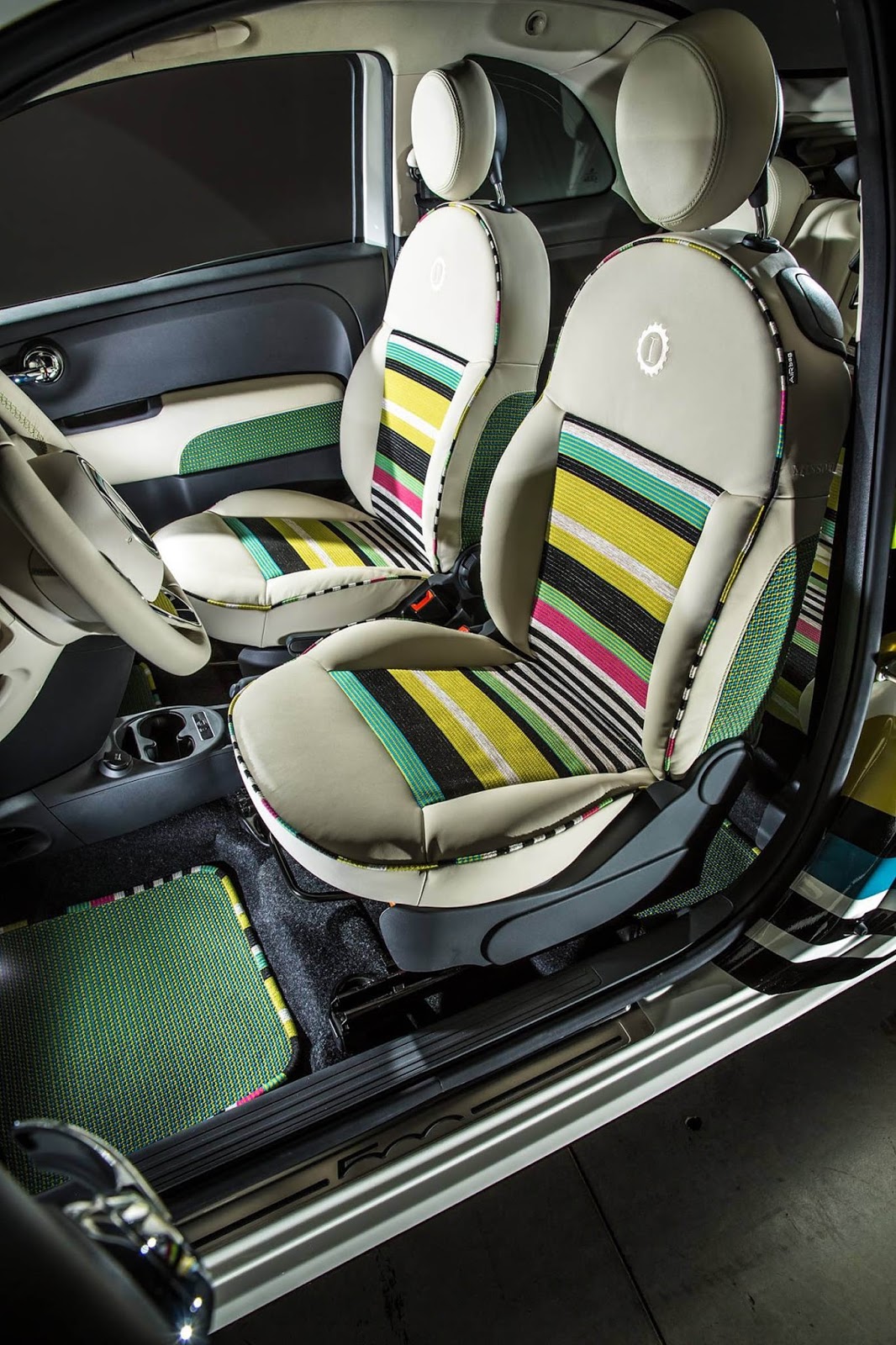
Missoni Fiat Interior
(photo credits to magazineauto.com)
However you like to interact with the Missoni brand, it is evident that throughout its lifespan, the brand has stayed true to their original values. At the forefront of fashion since its conception, the designs themselves have become iconic and occupy every design medium. If you are looking to sport some Missoni flair of your own, head over to our collection and snag some of our favorites!










